
The Ten Best Lawn Care Tips
Published: 20/12/2022 | Updated: 17/04/2023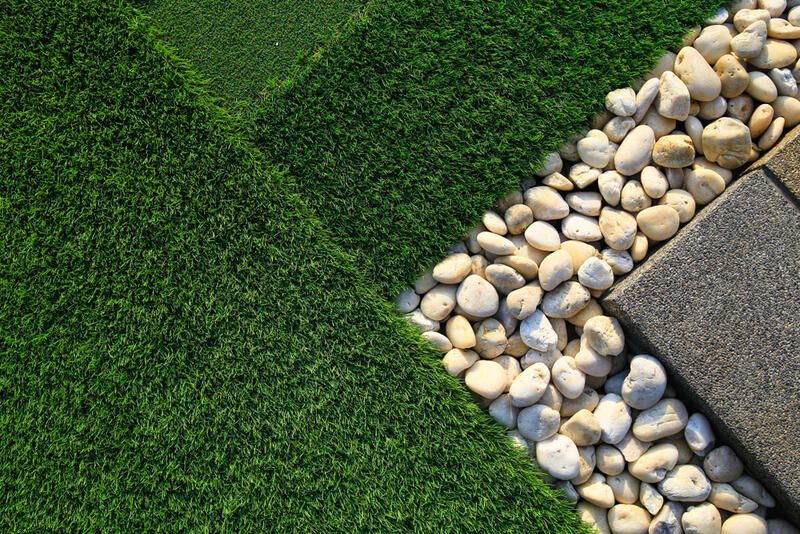
Whether you’ve always relied on someone else to take care of your lawn, or just got your own lawn, it’s understandable that taking care of it seems overwhelming.


But there is no need to be. Your lawn just has its particular needs in order to thrive. All you need is to take it to step by step, plus follow the right lawn care tips, to meet those needs.
And lucky for you, this article has everything you'll need for a healthy, lush, and green lawn to start right away!
Know your Location to Know your Grass
The most important factor of lawn care can slip off homeowners' minds the most. The climate of different locations. It's the determination to whether your lawn grasses thrive or not.
So first things first, educate yourself on which grass types are best accustomed to your location's climate and soil condition. That might be warm-season grasses or cool-season grasses.
For example, if your local climate is prone to drought, you'll want grasses resistant to droughts, like Tall Fescue or Buffalo grass.
Or, if it's an overly sunny spot on the map, you'll want grass types that thrive in the full sun like Bermuda grass or St. Augustine grass.
Whatever the case is, you just have to know your location and climate all year round, not just in the spring, well so that you choose the grass that is best for a green lawn.
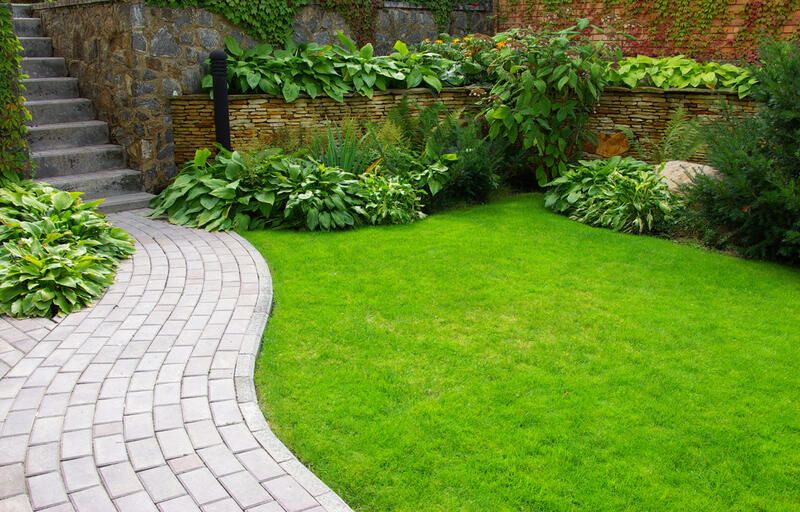
Test Your Soil
There's one more thing you need to do for a healthy lawn before starting seeding. And that's to pay extra attention to your soil.
Healthy soil is as important to a lawn as mowing, watering, fertilizer, and sunlight.
Learn to test your soil's acidity level (PH) early on, and then improve it for optimum results and you'll save yourself a lot of trouble later on. Especially with fertilizers.
If you're new to all of this, it might be best to take your soil to a lab or get a professional, but if you want to do this yourself, there are DIY ways!
For the soil's acidity test, all you need to do is have two samples of soil, each made up of two tablespoons of soil. Put each in a separate bowl. To one, add half a cup of vinegar, and to the other half a cup of baking soda.
Your aim should be neutral PH that doesn't react to either. If the one with vinegar reacts, that means you have alkaline soil. If the one with baking soda reacts, that means your soil is acidic.
In the acidic case, you can neutralize the soil of your lawn with finely ground limestone. And in the other case, apply ground sulfur.
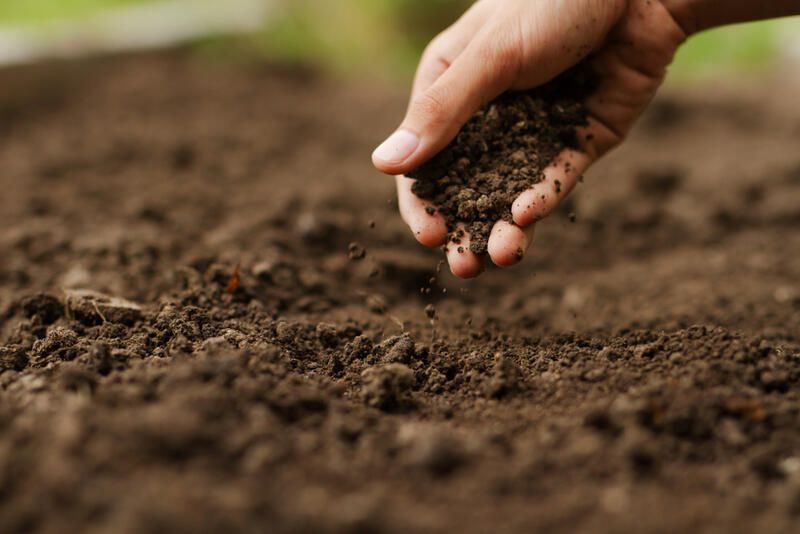
Seed Correctly
Once you have your grass seed and the perfect soil, you can start seeding. Seeding correctly for the first time isn't a difficult task. You just need to know how to go about it!
Your first step is to know the best time of the year to start putting in the grass seed you chose. Each grass seed best thrives when seeded in a particular season.
For example, if you've chosen warm-season grasses, you better seed them during spring and summer. As for cool-season grasses, fall and spring are the most beneficial time.
Over-seed
After seeding your bare spots, take care to also over-seed the brown batches. If you're worried that might be negative due to the prefix's connotations, don't worry.
Here it only means adding new grass seed over already present grass to prompt growth.
Water Your Lawn Correctly
Watering is one of the most essential things for a green lawn. It's also consistent lawn care.
Yes, there are wrong ways to water your lawn!
Depending on your location and the season, your lawn grasses' water needs will vary. Your sprinklers won't intuitively know this, of course, so you'll have to adjust them every season.
But there are some general rules that should help you. Generally, the best time to water your lawn is in the early morning. This will most likely be the case no matter your situation.
For how much water, you have to be more careful. Here the bad connotations of "over-" appear. Overwatering your lawn can be as damaging as underdoing it.
A good medium for healthy roots should be achieved by watering it thoroughly, yet not excessively, for around 15-20 minutes, depending on the season. Three times a week. The water should go deep in the soil, a medium of six inches down to best feed your roots.

Fertilize Your Lawn Grasses
Not unlike most things here, fertilization also depends on the season and other factors. But the one common ground rule is: lawns need fertilizer.
Lawns, like bodies, need varied and sufficient nutrients to thrive. And just like human bodies, overfeeding can be counter-productive.
With your grass seed information in mind, you can learn when and how much to fertilize for the best possible lawn care. You'll need starter fertilizer to spread on your lawn to help your grass start out.
After that, it gets easier. You just keep an annual schedule and make sure you stick to it to give your grass the push it needs with every new season.
Each season comes with its own challenges to actively growing grass. The hot weather can be as damaging as winter damage. Even warm-season grasses aren't immune. Fertilizing your lawn sufficiently around the year helps strengthen your grass against those elements.
Fertilize your lawn once in the early spring and another in late spring. Then another in summer. And don't forget the last annual one is in late fall. Your grasses may lay dormant in the winter, but they are not dead, so make sure there are always available nutrients.
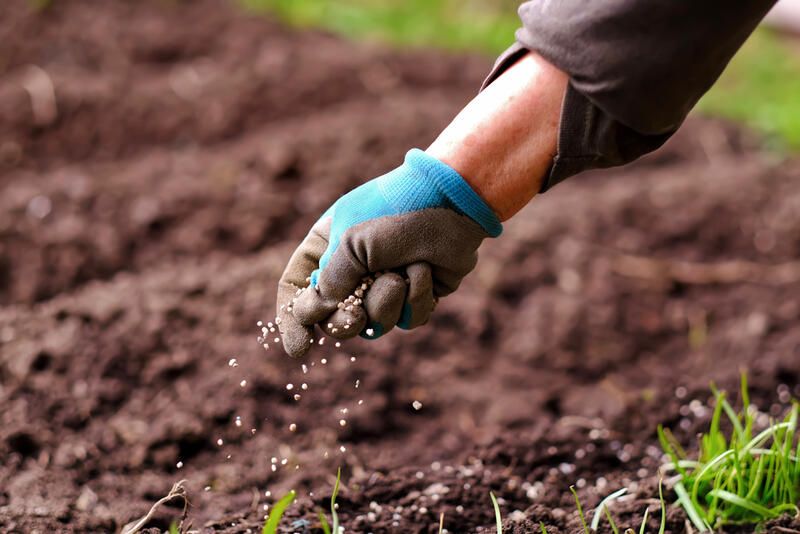
Aerate your Lawn
Occasional aeration is essential for healthy, lush, and green lawns. You can fertilize your lawn all you need, but if the soil is too compacted, the grass will be unable to absorb those nutrients and the fertilizer will be essentially useless.
Likewise, the compacted ground is as troublesome when it comes to stunting growth, even in a growing season, and leaving bare spots in the lawn.
Aerating the lawn with a garden fork will relieve the ground from that weight, improve drainage of excess water, and open it up to the air, encouraging new growth for your grasses.
Mow Your Lawn
Lawn mowing is also one of those things that you just have to do regularly for lawn care. Obviously not as regularly as watering, but procrastinating on this task will just bring more problems later.
And aside from that, there are also wrong and right ways to mow. A fact many homeowners might not be aware of.
You must be tired of hearing that from us by now, but like most entries of this list, lawn mowing also varies according to the time of the year and sometimes even according to the type of grass. Some grass types grow faster than others!
And otherwise, growth and grass height will change from season to season, and so should your mowing frequency and height. General rules will have you set your mower lowest for early spring, then higher for summer, then even higher for fall, and so on.
Another thing to keep in mind is, contrary to what you might think you need, you shouldn't actually cut and mow your lawn to the shortest possible outcome for your grass.
It's best you cut one-third of the grass height for a healthy lawn, More than that can end up damaging your lawn and turf.
As for frequency, you'll want to mow with a higher frequency in summer than late spring, or early fall, with an interval of 4-6 days optimally for summer and 5-7 days in late spring.
Then you have to put extra care into your mower maintenance. For sharper grass blades, thick mawn, and even ground, as much care has to be put into the mower as to the mowing.
Most of the issues arising in your lawn grasses can go back to your mower not working as it should. Clean and sharpen it frequently for sharper grass clippings on your grass blades.
More lawn care tips when it comes to lawn mowing are changing the direction of your mower each week and avoiding mowing directly after watering or if the grass is still wet.
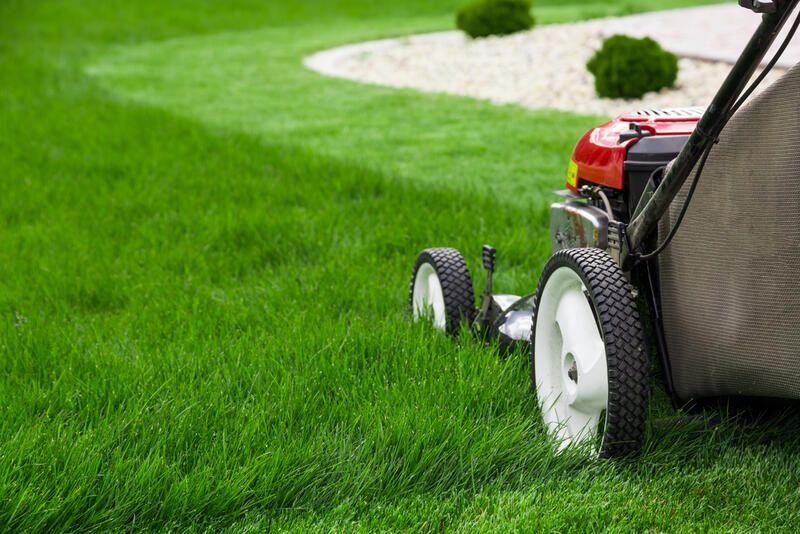
Remove Weeds
Weeds are the monster under the bed for your lawn. They compete with your grass for nutrients, light, and water, they absorb whatever fertilizer you apply to your lawn for growth, and leave less water for your grass.
For a healthy and lush lawn, you have regularly remove those killer weeds. Especially the more harmful turf weeds.
Be careful choosing your herbicides and removing methods because they can and do kill grass alongside those turf weeds!
Take Care of Pests
In a garden or a lawn, pests will find their way to it. However, you can keep most of them away and repulse the rest.
Excessive pesticides can be damaging to lawns, so make sure this is left as the last option and in the least quantities.
Before reclusing to that option, there are other natural things you can do to prevent them, like cleaning and removing debris and snow mold regularly, as well as keeping your thatch down and low.
Dethatch
As mentioned for pest control, dethatching is important. But like many other lawn care tips, you have to do this one carefully.
A little thatch is useful for your lawn, so the best thing to do is rack the thatch until there's only a layer measuring half an inch remains.
For any additional help, don't hesitate to reach out to shrubhub.com


